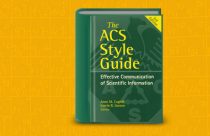What are the Unique Characteristics of Chicago Manual of Style?

What is the Chicago Manual of Style?
The Chicago Manual of Style (CMOS), usually truncated to the “Chicago style,” is a method of formatting and citation that was first published by the University of Chicago Press in 1906.
2010 saw the publication of the 16th edition of The Chicago Manual of Style, and the manual continues to cover a wide range of publication topics, from American English grammar, usage, notation, and manuscript preparation.
Often referred to as the “editor’s bible,” CMOS is predominant in the humanities and social sciences and most historical journals. There are two CMOS documentation styles:
The Notes–Bibliography System
The Chicago NB system is most often used in literature, history, and arts publications. It requires the use of an endnote or footnote every time a source is referenced, whether as a direct quote, a paraphrased passage, or a summary.
The citation is referenced in the text via a superscript number referencing the full bibliographical information listed either at the bottom of the page or the end of the chapter. There are specific rules for multiple citations of the same source, including the use of the word “ibid” from the Latin word ibidem, which means “in the same place.”
The bibliography is provided in an alphabetical list of all sources referenced in the work at the end of that work. It may sometimes include other sources of further reading that were not cited in the text. Formatting of the sources may vary according to the original source format (articles, books, web sites, etc.). Also, there are specific punctuation rules for author(s) names, title of work, and publication title and date.
The Author–Date System
The Chicago Author-Date System is used primarily in the science and social science disciplines.
The distinction between the NB system and the AD system lies in two specific areas. Rather than using footnote or endnote citations indicated by superscript numbers, the AD system uses text citations in brackets after the source reference (Author, title, date) with specific rules on punctuation.
The second distinction is the use of references as opposed to a bibliography. The purpose is the same—a comprehensive list of sources used in the text—but the order and punctuation rules for a reference list are different.
Follow the Requirements
If you are more familiar with the formatting styles of the American Psychological Association (APA), or the Modern Language Association (MLA), don’t assume that your paper just needs to be “tweaked” to meet the requirements of a journal that requires the use of CMOS.
Invest in a copy of the 16th edition of The Chicago Manual of Style or look for one in your library. Failure to follow the required style manual is the first reason for automatic rejection of your journal submission. After all, if you didn’t pay enough attention to submitting in the correct format, what does that say about your attention to detail in the research itself?









